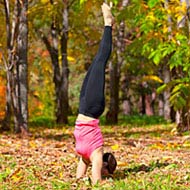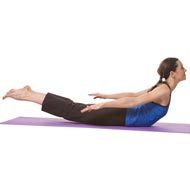- Raja yoga
- Yoga Stretches
- Jivamukti Yoga Poses
- Yoga Tree Pose
- Sun and Moon Yoga
- Wind Removing Pose
- Hare Pose
- Accomplished Pose
- Revolved Abdomen Pose
- Raised Foot Pose
- Scorpion Pose
- Butterfly Pose
- Half Tortoise Pose
- Revolved Twist
- Balancing Stick Pose
- Cat Pose
- Supported Shoulderstand
- Crane Pose
- Handstand
- Happy Baby Pose
- Firefly Pose
- Scale Pose
- Side Plank Pose
- Upward Facing Two-Foot Staff Pose
- Reclining Big Toe Pose
- Stick Pose
- Revolved Head-to-Knee Pose
- Full Boat Pose
- Upward Extended Feet Pose
- Yoga arm balance poses
- Core Yoga
- Inversion Yoga Poses
- Seated And Twist Yoga
- Horse Pose
- Cobbler Pose
- Seated Wide Angle Pose
- The Compass Pose
- Half Crow Pose
- Bound Half Moon Pose
- Lotus Pose
- Reverse Warrior Pose
- Fixed Firm Pose
- Back-bend Poses
- Forward bend Poses
- Sarvangasana
- Ashtanga Yoga Poses
- Warm up poses
- Seated Poses
- Seated Forward Bends
- Chair Poses
- Standing Poses
- Standing Balancing poses
- Yoga Asanas
- Hatha Yoga Asanas
- Yoga Postures Online
- Partner Yoga Poses
- Anusara Yoga Poses
- Advanced Yoga poses
- Restorative Yoga Poses
- Kids Yoga Poses
- Beginning Yoga Postures
Urdhva Mukha Pinch Mayurasana
The word ‘mayura’ is Sanskrit for peacock, while the word ‘pincha’ means the chin or the feathered plume. Also known as the Forearm Balance Pose, the Urdhva Mukha Pinch (Mayurasana Pose) is an advanced inverted yoga pose.
Since the pose requires inversion and balancing on the forearms, it may take a practitioner several years to master.
Not ideally suited for beginners, this is a pose which needs to be practiced a lot because of the degree of difficulty. The pose is known to be especially useful for improving strength of the arms and the upper back. Once you are able to improve your sense of balance, it will become much easier to perform this pose. It is best to perform this pose in the supervision of a trained teacher a few times before performing it on your own.
Steps :
- Start off by kneeling on the floor with your forearms on the ground, parallel to each other. You may bend your arms at the elbows. Place them in such a way that your upper arms stand perpendicular to the forearms. Throughout the pose, it is important to maintain the right angles of the arms. Proper alignment of the arms is necessary to maintain the proper posture and balance required for this pose.
- Keeping the forearms planted strongly on the floor, lift your head off the floor and kick your legs up into the air. If you have positioned yourself against a wall, walk your way up till your buttocks are raised towards the ceiling. Try to prevent your forearms from rolling and your inner wrists from coming up.
- Keep your elbows steady and prevent them from splaying as that could disturb the forearms’ positioning. You may choose to use a yoga belt to keep your elbows from widening and disturbing the position of the forearms.
- Concentrate on keeping your upper arms perpendicular to the floor as this will help you get a good base for the next step and the inversion itself. Firm your shoulder blades and position them in such a way that they remain lifted towards the tailbone.
- Keep walking the legs further until the spine is at a ninety degree angle to the ground. Shift your weight gently from the elbows to the forearms. Maintain the proper distance and do not walk too far so as to lose your balance and fall down.
- Remain in position for about thirty seconds. Do not prolong remaining in the pose for long, as this could cause health problems and pain.
Precautions :
- However, if you have had a recent injury to the shoulder, back or neck, it is best to avoid performing it.
- It is always best to perform some relaxing poses and stretching before you perform this pose.
- If your shoulders are tensed and painful, it is best to open them up and relax them before you begin to attempt this pose.
- If you suffer from frequent headaches and migraines or have a heart condition or high blood pressure, avoid performing the pose.
- If you are menstruating, it is best to wait until your cycle is over before performing the pose.
Beginners Tip :
This is a tough pose for beginners, especially because they are unable to manage the balance and alignment required to perform the pose. Beginners are often unable to perform the pose without the help of yoga blocks so do not be afraid to use them as and when you want. If you are in a yoga class, you can ask two other people from your yoga class to help you with the pose. They can stand by your sides and place a foot on your either side to prevent your elbows and your forearms from splaying. Use a yoga mat to prevent yourself from slipping on the mat. You may also use a belt loop on your shoulders to prevent the arms from losing their parallel position.
Benefits To Body Parts :
- The pose is useful in strengthening the shoulders and the forearms. The pose also releases tension in the base of the neck and the shoulders. As more blood is pushed towards the neck and the shoulders, the organs in these areas become more efficient.
- Apart from the shoulders, the pose also benefits the rips, upper back and the upper arms. Since the entire anatomy of these body parts is being used for balance, all of the body parts get toned.
- Your legs and buttocks can also get strengthened because you use their muscles to maintain the balance and the alignment. The thigh muscles can also get toned.
Therapeutic Applications :
The therapeutic applications of this pose are many. All inverted poses help improve blood circulation so that more of it reaches the head and the brain. This can be especially beneficial for those who have had circulation problems in the past. As the head receives more fresh blood and nourishment, it refreshes you and energizes your mind. This can improve mental abilities and acuity. Additionally, the pose also strengthens almost all of your body and tones it as well.
Variations :
There are not many variations for Urdhva Mukha Pinch (Mayurasana Pose). Some people perform the variations of the mayurasana such as the Padma Mayurasana and the Uttana Padma Mayurasana. However, these are not really variations of the pose, but different poses from the same family of poses.
Preparatory Poses :
- One-Legged King Pigeon Pose (Eka Pada Rajakapotasana) to strengthen the arms and the upper back.
- Shoulder Stand (Sarvangasana) to improve the stability and strength of your shoulders.



